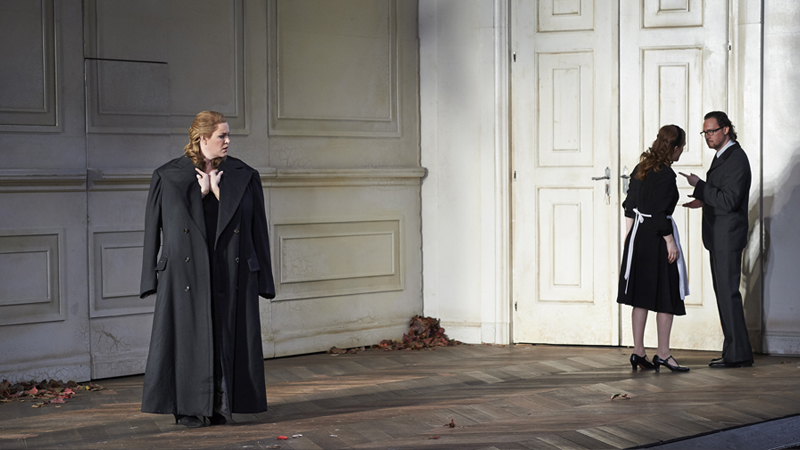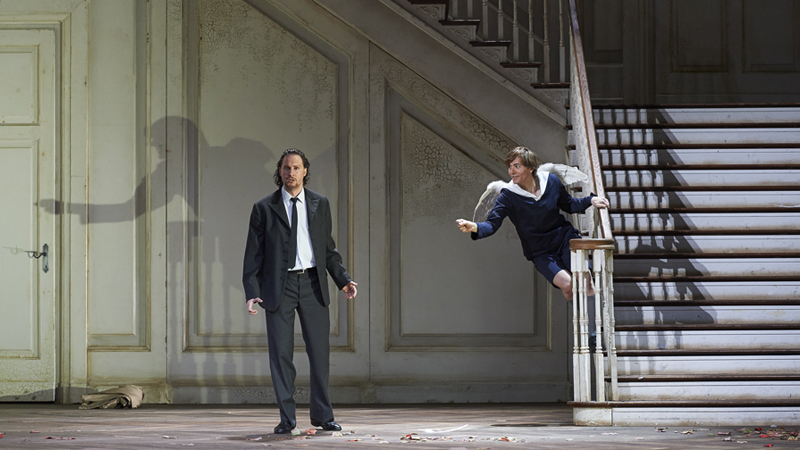A subversive comedy from one of history’s greatest composers, Mozart’s
The Marriage of Figaro returns to the COC stage this winter to serve up opera’s most profound music! This masterpiece unfolds over the course of one crazy day as Figaro and Susanna, both servants in an aristocratic household, get ready for their wedding day, all while navigating the unexpected twists and turns of romantic attraction.
Read on to learn the 10 things you should know before heading to the opera!
Opening at the Four Seasons Centre for the Performing Arts on Friday, January 27, the first night of our winter run coincides perfectly with the 267th birthday of composer Wolfgang Amadeus Mozart. Celebrate with us at opening night as we toast the opera icon with one of his most beloved works!
A reputation that precedes it
Mozart and his brilliant collaborator, librettist Lorenzo Da Ponte, based their opera on Pierre Beaumarchais’ infamous La folle journée, ou Le Mariage de Figaro—a play banned by King Louis XVI for its depiction of a rebellious servant who ridicules a corrupt aristocracy. The play eventually saw enormous success in pre-Revolutionary Paris, gaining mass popularity for its scathing satire, controversial reputation, and overt sexual themes.
Fan favourite since day one
Two years after the play’s debut, Mozart premiered his opera in Vienna to immediate success. Audiences so loved the work that the many calls for encores caused Joseph II (ruling monarch of the Hapsburg Empire) to issue an edict banning ensemble encores in the interest of keeping the theatre hours reasonable and the management costs down.
An unforgettable score
Of course, it’s Mozart’s luminous score that sets Figaro apart in the canon, featuring some of opera’s most famous and well-loved melodies. Among them, the duettino—or short duet—“Sull’aria…che soave zeffiretto” (“On the breeze… what a gentle zephyr”) is a tender and delicate interweaving of voices, which crossed over into pop culture when it was featured in the Academy Award-nominated classic The Shawshank Redemption. The opera’s third-act aria “Dove sono,” (“Where are [those happy moments]”) meanwhile, has become one of the most regularly performed in the repertoire—a passionate and heartbreaking ode to love and devotion.
Of the people, for the people
Figaro is understood to be among the first significant operatic works to turn its attention away from mythological and biblical stories and treat seriously the lives of ordinary people. Prior depictions of common people in opera tended towards farcical and one-dimensional comic relief, whereas Mozart displayed deep feeling for each of the major characters in Figaro, giving them rich and fully realized inner lives and complex motivations.
Four couples, one complicated day
Set all within the span of one hectic day on the eve of a grand wedding, The Marriage of Figaro revolves around four intertwined couples each with their own goals of romantic satisfaction and financial security. There are countless exits and entrances, mistaken identities, and twists and turns as characters hide, spy, overhear, and escape through the household’s many windows, doors, and staircases in pursuit of their desires—all unfolding in a fascinating, fast-paced story with a spectacular finale.
This production is “perfection” (Bloomberg)
Originally conceived as part of the Salzburg Festival’s celebration of Mozart’s 250th birthday, this production treats the opera as a dream-like psychological exploration of love’s sublime and blinding powers. Renowned German director Claus Guth relocated the action from 18th-century Andalusia to
fin-de-siècle—the transition from the 19th to 20th century—Central Europe. Pulling atmospheric inspiration from the plays of August Strindberg and films of Ingmar Bergman, this production “opens up a new perspective on an opera that is normally staged as a lightweight, turbulent farce” (
Zeit online).
The power of love
This production’s most striking element is the addition of a non-speaking character, Cherubim, who is costumed almost exactly like the page, Cherubino. Cherubim is invisible to the other characters and frequently manipulates them, pushing them together or pulling them apart, symbolizing the engine which drives Mozart’s complex musicodramatic creation: romantic attraction.
Upstairs, downstairs, inside, and out
The action is set in what could be the main hall of a 19th-century mansion. In the opera’s finale (traditionally set in a garden at night), the set is turned upside down, reflecting the story’s subversion of the master-servant relationship. Love itself has triumphed and displaced societal hierarchies, while romantic passion continues to influence how the characters navigate their world.
Figaro endures
Figaro has never left the repertory and endures today as a smart and witty exploration of human relationships, as well as a wholly satisfying example of opera’s potential to fuse comedy, drama, poetry, and music into a complete work of art.
Join us for
The Marriage of Figaro, opening on Mozart’s birthday—Friday, January 27, 2023! Tickets now on sale.
Photos: Michael Cooper




